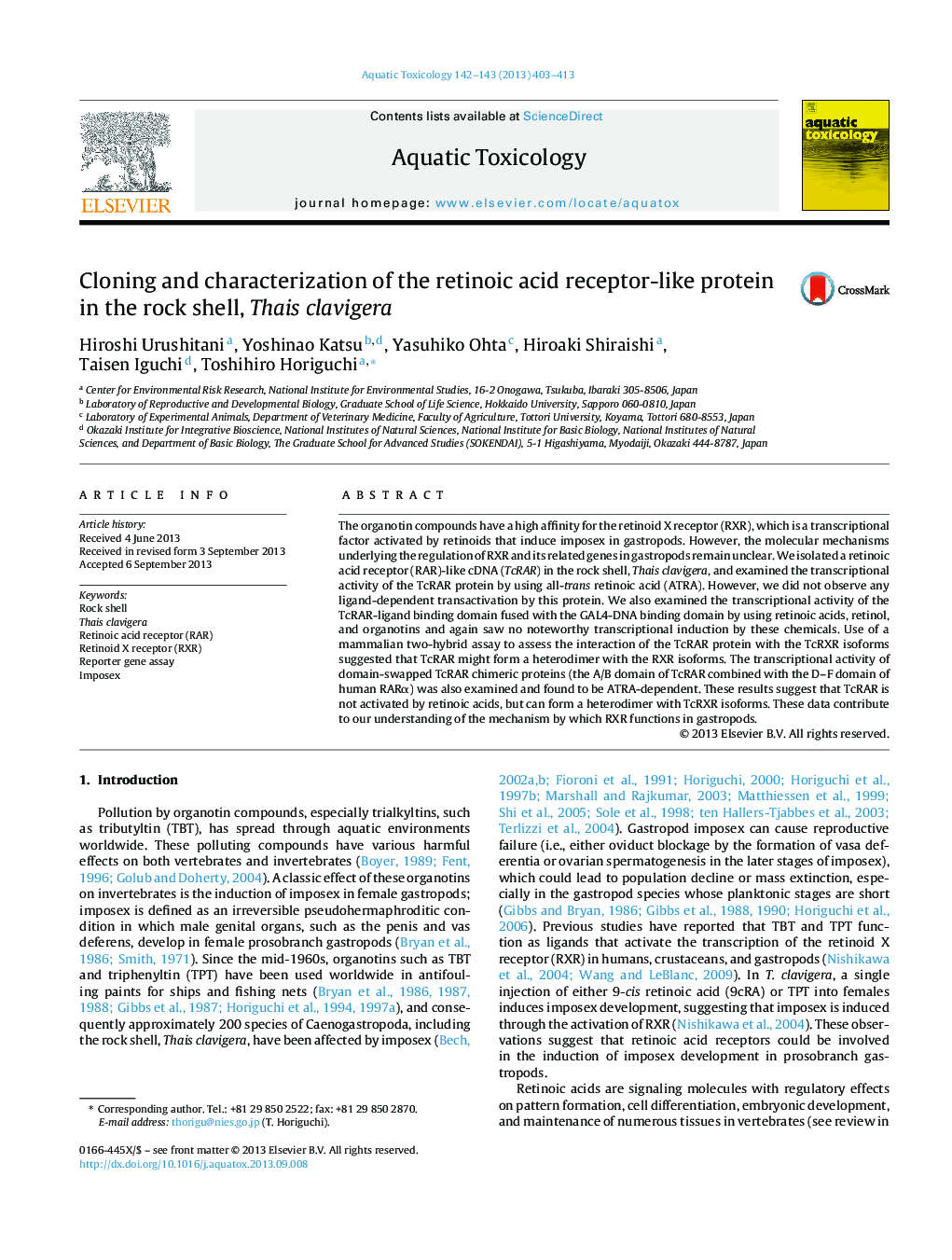| Article ID | Journal | Published Year | Pages | File Type |
|---|---|---|---|---|
| 4529457 | Aquatic Toxicology | 2013 | 11 Pages |
•We examined the mechanism of imposex induction, focusing on RXR signaling pathway.•To investigate candidate partner for RXR, we isolated an RAR-like cDNA in rockshell.•This RAR-like protein was not activated by retinoic acids.•However, it may form a heterodimer with TcRXR isoforms.
The organotin compounds have a high affinity for the retinoid X receptor (RXR), which is a transcriptional factor activated by retinoids that induce imposex in gastropods. However, the molecular mechanisms underlying the regulation of RXR and its related genes in gastropods remain unclear. We isolated a retinoic acid receptor (RAR)-like cDNA (TcRAR) in the rock shell, Thais clavigera, and examined the transcriptional activity of the TcRAR protein by using all-trans retinoic acid (ATRA). However, we did not observe any ligand-dependent transactivation by this protein. We also examined the transcriptional activity of the TcRAR-ligand binding domain fused with the GAL4-DNA binding domain by using retinoic acids, retinol, and organotins and again saw no noteworthy transcriptional induction by these chemicals. Use of a mammalian two-hybrid assay to assess the interaction of the TcRAR protein with the TcRXR isoforms suggested that TcRAR might form a heterodimer with the RXR isoforms. The transcriptional activity of domain-swapped TcRAR chimeric proteins (the A/B domain of TcRAR combined with the D–F domain of human RARα) was also examined and found to be ATRA-dependent. These results suggest that TcRAR is not activated by retinoic acids, but can form a heterodimer with TcRXR isoforms. These data contribute to our understanding of the mechanism by which RXR functions in gastropods.
